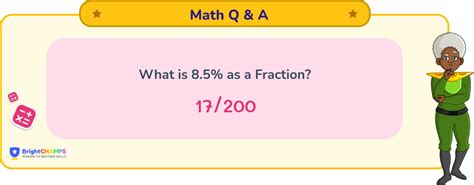What Is 8/5 As A Percentage
Kalali
Apr 02, 2025 · 4 min read

Table of Contents
What is 8/5 as a Percentage? A Comprehensive Guide
Converting fractions to percentages is a fundamental skill in mathematics with widespread applications in various fields, from finance and statistics to everyday calculations. This article provides a comprehensive guide on how to convert the fraction 8/5 into a percentage, explaining the process step-by-step and exploring related concepts. We'll delve into the underlying principles, offer alternative methods, and even touch upon practical examples to solidify your understanding.
Understanding Fractions and Percentages
Before diving into the conversion, let's refresh our understanding of fractions and percentages.
Fractions: A fraction represents a part of a whole. It consists of a numerator (the top number) and a denominator (the bottom number). The numerator indicates the number of parts you have, while the denominator indicates the total number of parts the whole is divided into. In our case, 8/5 means we have 8 parts out of a total of 5 parts. This is an improper fraction because the numerator is larger than the denominator.
Percentages: A percentage is a way of expressing a number as a fraction of 100. The symbol "%" represents "per cent," meaning "out of one hundred." For example, 50% means 50 out of 100, or 50/100, which simplifies to 1/2.
Converting 8/5 to a Percentage: The Step-by-Step Process
The conversion of 8/5 to a percentage involves two main steps:
Step 1: Convert the fraction to a decimal.
To convert a fraction to a decimal, we divide the numerator by the denominator:
8 ÷ 5 = 1.6
Step 2: Convert the decimal to a percentage.
To convert a decimal to a percentage, we multiply the decimal by 100 and add the percentage symbol (%):
1.6 x 100 = 160%
Therefore, 8/5 as a percentage is 160%.
Alternative Methods for Conversion
While the above method is straightforward, there are other ways to achieve the same result:
Method 1: Using Proportions
We can set up a proportion to solve for the percentage:
8/5 = x/100
Cross-multiplying, we get:
5x = 800
Dividing both sides by 5:
x = 160
Therefore, 8/5 is equal to 160%.
Method 2: Converting to a Mixed Number First
Since 8/5 is an improper fraction, we can convert it to a mixed number before converting to a decimal and then a percentage.
8/5 = 1 3/5
Now, convert the fraction part (3/5) to a decimal:
3 ÷ 5 = 0.6
Add this to the whole number part:
1 + 0.6 = 1.6
Finally, convert the decimal 1.6 to a percentage:
1.6 x 100 = 160%
This method demonstrates that even with an improper fraction, the result remains the same: 160%.
Understanding the Meaning of 160%
A percentage greater than 100% indicates that the part is larger than the whole. In the context of 8/5 = 160%, this means that we have 160% of the original quantity, implying that we have 60% more than the original whole.
Example Scenario: Imagine you had a certain amount of money, and you now have 8/5 times that amount. This represents a 60% increase from the initial amount, resulting in a total of 160% of your original sum.
Practical Applications of Percentage Conversions
The ability to convert fractions to percentages is crucial in numerous real-life scenarios:
- Finance: Calculating interest rates, returns on investments, profit margins, and discounts all involve percentage conversions.
- Statistics: Representing data in a clear and concise manner using percentages is essential for data analysis and interpretation.
- Science: Expressing experimental results, concentrations, and proportions often require the use of percentages.
- Everyday Life: Calculating tips, sales tax, and discounts involves working with percentages.
Beyond the Basics: Working with More Complex Fractions
The principles outlined above can be applied to convert any fraction to a percentage. Even complex fractions can be simplified using the same steps. For example, let's consider the fraction 24/15:
- Convert to a decimal: 24 ÷ 15 = 1.6
- Convert to a percentage: 1.6 x 100 = 160%
The process remains consistent regardless of the complexity of the fraction.
Troubleshooting Common Errors
While the conversion process is relatively simple, some common errors can occur:
- Incorrect division: Ensure you accurately divide the numerator by the denominator when converting the fraction to a decimal.
- Forgetting to multiply by 100: Remember to multiply the decimal by 100 to obtain the percentage.
- Misinterpreting the result: Understand that percentages greater than 100% are possible and represent values larger than the whole.
Conclusion
Converting fractions to percentages is a fundamental mathematical skill with practical applications in various domains. The step-by-step method outlined in this article, along with the alternative methods and explanations, provides a comprehensive understanding of how to convert 8/5 to 160% and other fractions to percentages. Remember to practice these techniques to solidify your understanding and build confidence in tackling similar problems. By mastering this skill, you equip yourself with a valuable tool for numerical analysis and problem-solving in numerous contexts. Understanding the meaning and implications of percentages, especially those exceeding 100%, is also critical for accurate interpretation of data and real-world applications.
Latest Posts
Latest Posts
-
Find All Complex Zeros Of The Polynomial Function
Apr 03, 2025
-
How Many Cups To 20 Oz
Apr 03, 2025
-
What Is 230 Degrees Celsius In Fahrenheit
Apr 03, 2025
-
Cuanto Es El 25 De 100
Apr 03, 2025
-
How Many Gallons Are In 3 Liters
Apr 03, 2025
Related Post
Thank you for visiting our website which covers about What Is 8/5 As A Percentage . We hope the information provided has been useful to you. Feel free to contact us if you have any questions or need further assistance. See you next time and don't miss to bookmark.
